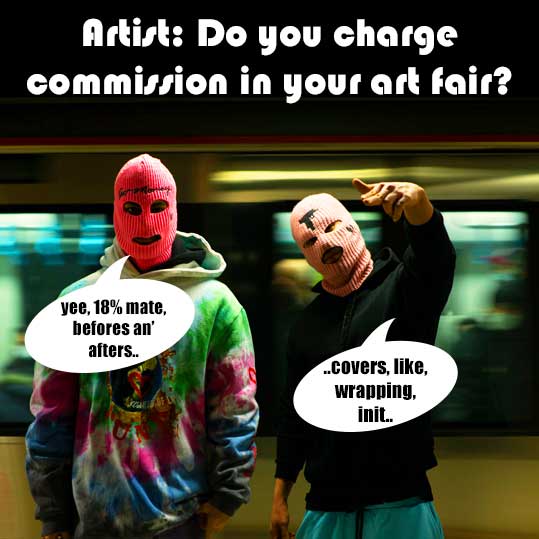Parallax Art Fair is not like any other art fair. It grew out of a research exhibition held in London in 2010. It was the first entretive fair in the capital (Entretive = creative entrepreneur). The original exhibition looked at how viewers often see art through prejudices unknown to them. This idea is still central to Parallax today and is what makes it often challenging, confusing, open to misinterpretation, and strange to most people. Most people don’t understand Parallax because they miss that they are the subject.
Unlike other fairs that try to sound and look 'radical', and yet maintain traditional approaches to thinking about objects, Parallax is a conceptual work of art as well as a fair. It is a new kind of historical event. We do not believe in outmoded prejudices, such as qualities like ‘good’ and ‘bad’ residing ‘somewhere’ in art objects. Art selection is philosophically dubious and mainly about marketing. All objects are equal and all makers of those objects are equal. This is emphasised in the presentation of the fair (often misunderstood), which also celebrates and incorporates random events.
Parallax mainly exhibits independent artists and designers and is different from a dealer or part-dealer fair. We also do not sell particular artists in a fair privately; all artists are treated equally and fairly.
- *No commission tax.
- *No sales desk - exhibitors take their own sales.
- *No private selling. All exhibitors equal.
- *No name badges - it ain't a prison.
- *Low break-even points - win-win for exhibitors and visitors.
Parallax is open about the problems that artists face and the difficulties of selling their products on speculation, which is what they often try and do. But whereas other fairs for artists hire exhibition panels cheaply and then mark them up by thousands of per cent, in full knowledge artists will struggle to sell, Parallax focusses on keeping break-even points low. This means artists have more chances of selling or developing a market over time. This is why 60%-70% of exhibitors are returnees in Parallax, many exhibiting three or four times a year with us.
Watch a philosophical video about us here or get the book here!


The art industry and its educational system is obsolete and should have changed decades ago. It is time to set us free.
At Parallax, everything we do stems from questioning what art history is and whether it should condition how we think. As a system, it is a meaningless jumble of older philosophies that few would agree with today. Yet, it influences why dealers prefer one work over another, why critics believe a particular artist or art fair is ‘important’ whilst dismissing others, and why, even, some artists criticise their peers. It has a profound influence over art commerce, how we determine what is 'contemporary', the way exhibitions are run, how museums display collections and the way people are taught to think about art & design. And yet it is full of absurdities. But freeing ourselves means we can enjoy the present moment (no, not in some cloud of existentialism) and respect all people and what they do. This is why we do not have a VIP department. Everyone is a VIP at Parallax.
The same philosophy influences how we seek to treat our staff, building up their confidence and skills in an industry well-known for its 'sleaze', bullying, and difficult career entry.




